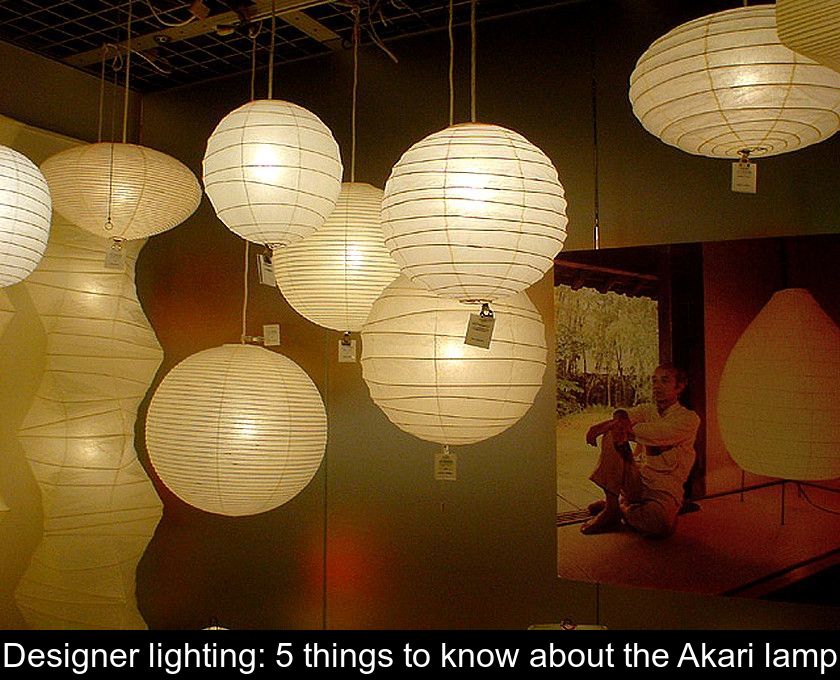Designer Lighting: 5 Things To Know About The Akari Lamp
More than just paper lanterns, Akari lamps have been design icons for over 70 years. While these lights are made using an ancient method, they reinvent Japanese paper lanterns and bring them into modernity. Here are 5 things to know about the iconic Akari lamp.
1- These lamps were created by a former assistant of Brancusi.
The story of the Akari lamps began in Gifu, Japan, in 1951. This city is one of the last in the Japanese archipelago where cormorant fishing is still practiced on the Nagara River.
Almost every night, the fishermen who perpetuate this tradition hang lanterns at the front of their boat and light them in the darkness. It was upon seeing this spectacle that the Japanese-American artist and designer Isamu Noguchi got the idea to create the Akari lamp in 1951.
Do not be surprised if you find that these designer lights resemble paper sculptures: their creator Isamu Noguchi (1904-1988) was the assistant of the sculptor Brancusi!
2- They come in various shapes but a single material.
Akari lamps are lighting fixtures made of washi paper or mulberry bark paper and a bamboo and metal structure. While they always feature the same material, the famous Japanese washi paper, they come in countless sleek shapes.
These designer lighting fixtures can be classified into 5 main categories: table lamps, floor lamps, floor lights, single pendants, and columns. It is through the diversity and graceful lightness of its forms that the Akari lamp has conquered the world.
3- Their name evokes brightness and lightness.
The name Akari in Japanese can be translated as “light combined with lightness”: a perfect description for these lamps to which the artist Isamu Noguchi dedicated nearly 37 years of his life!
About this creation, inspired by traditional Japanese lanterns, Noguchi wrote: “The light of an Akari resembles the sunlight filtered through shoji paper. By the magic of paper, the cold glow of electric light is transformed into the eternal light of the sun. Its warmth continues to heat our interiors during the night.”
4- Each lamp requires at least 6 hours of work.
Just as the lanterns of Gifu fishermen are handmade from washi paper, Akari lamps are all handcrafted. They are the result of an artisanal skill that has been perpetuated in Japan since the 7th century.
It takes at least 6 hours of work to create this object, which is both a source of light and a work of art. From their commercialization in 1951, these luminous, airy, and poetic sculptures met with immediate international success.
Widely imitated since then, the lamps of the Japanese master remain highly sought after, so much so that their workshop in Japan struggles to meet the demand... It must be said that these light sculptures with their clean lines integrate into any decor and enhance it.
5- Authentic Akari lamps can be recognized by their logo.
Today, there are over 200 models of Akari lamps with more or less extravagant shapes. These designer lights are still handcrafted in a family-run workshop located in Gifu.
If you dream of acquiring this iconic design object, plan for a budget of several hundred euros and beware of counterfeits! Authentic Akari lamps can be recognized by their logo. This logo, consisting of a juxtaposed sun and crescent moon, certifies their authenticity.











